When it comes to snow and water mitigation in your driveway, gravel is by far one of the best materials to use. Any permeable materials are better than non-permeable ones, but gravel, in particular, is especially great at facilitating maximum drainage. Gravel is also one of the easiest materials to install and depending on how you install it, could provide you with almost 100%-permeability and effectively eliminate any concerns you have about flooding or snow buildup.
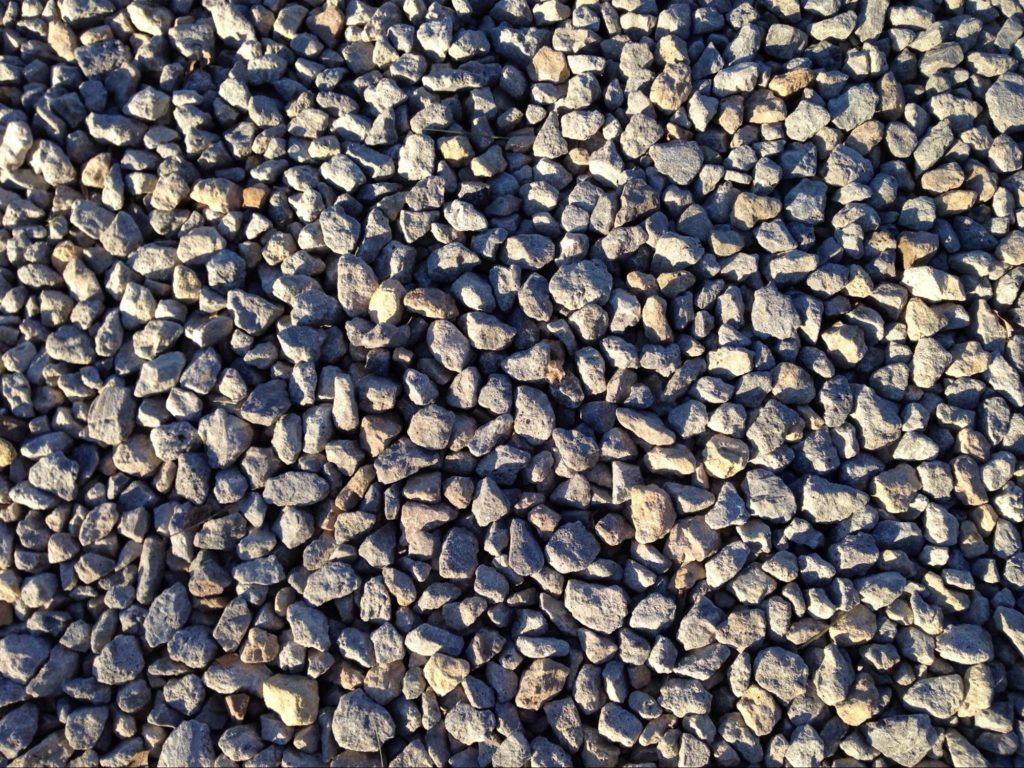
DIY gravel driveways are especially popular among homeowners because they cost less to install and can be completed rather quickly. If you’re looking for ideas on how to implement a permeable gravel driveway, here are a couple of diy gravel driveway ideas:
Loose Gravel
Loose gravel is one of the most common diy gravel driveway ideas. It drains water and mitigates snow buildup much more effectively than something like asphalt or concrete. The only downside to using loose gravel is that it spreads and disintegrates rather quickly.
This can lead to ruts and mud holes if you don’t constantly replace and rake the gravel, especially if you don’t have some type of border keeping it in place. Installing a loose gravel driveway is incredibly simple and can be completed in a handful of hours.
First, you need to mark out the area you want to use as a driveway with string and landscape stakes. Then, clear out the grass and topsoil from the area. This can be done with a shovel for small driveways, but you may want to rent an excavator or hire a pro to do it for you if your driveway is larger.
By multiplying the height, length, and width of your driveway, you can arrive at an estimate of how many cubic yards your driveway is. Once you have this information, a gravel company can provide you with an estimate as to how many tons of gravel you’ll need, depending on what type you choose.
After you’ve determined how much gravel you’ll need, simply level the path of your driveway by hand or with a backhoe. You can also lay a weed barrier down at this point if you like. Once your gravel has been delivered you’ll want to spread and compact the base layer to create a somewhat sturdy foundation. Next, you’ll want to spread the second layer of gravel before finally spreading and smoothing the final layer.
Once this is done, your loose gravel driveway is complete. It should drain water rather effectively and despite needing constant maintenance, will serve you quite well when it comes to mitigating both water and snow buildup.
Stabilized Gravel with Permeable Pavers
Loose gravel is okay for mitigating water and snow in your driveway, but using permeable pavers to stabilize gravel is one of the best diy gravel driveway ideas you’ll find. Stabilized gravel not only provides a more sturdy surface, it also prevents the spread of gravel and reduces the amount of maintenance you need to perform on your driveway to almost zero.
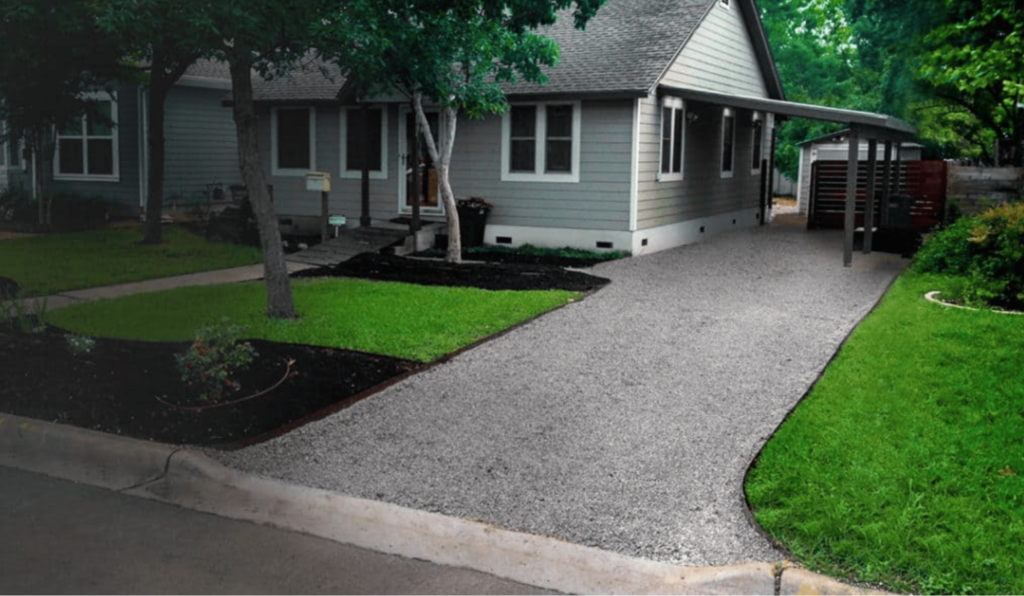
TRUEGRID pavers, for example, can be used to help you achieve 100%-permeability in your driveway. Both TRUEGRID PRO LITE and TRUEGRID PRO PLUS will lock gravel into the surface of your driveway while also spacing it out in such a way that provides better drainage capabilities than a loose gravel driveway.
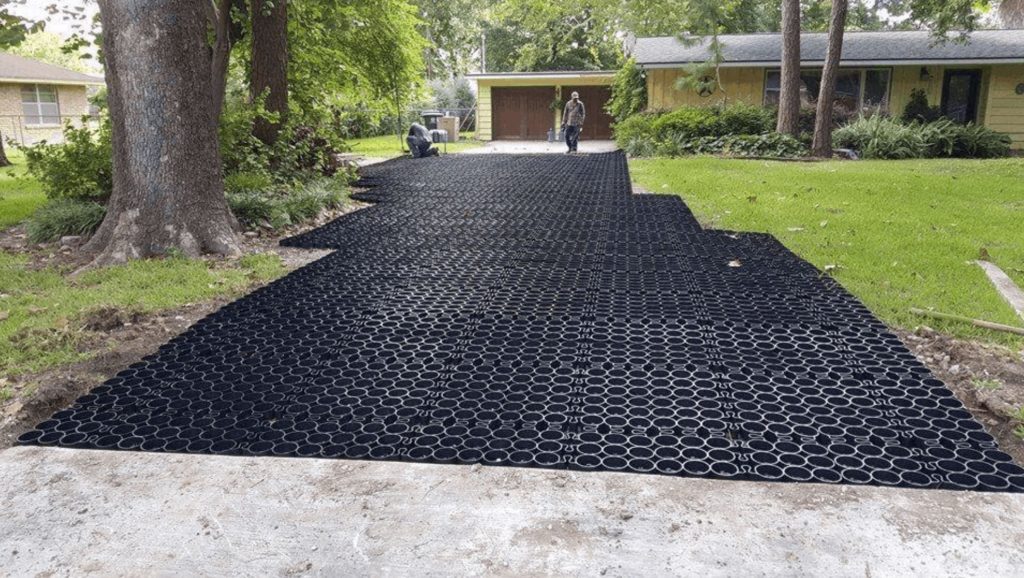
TRUEGRID pavers help to prevent snow buildup as well, since the internal temperature of the surface of the pavers stays warmer than the surface of an asphalt or concrete driveway, to melt snow faster and prevent as much of it from piling up.
The installation process for a TRUEGRID driveway is about as simple as it gets, and can be completed in a day or less in many cases. First, the driveway area is excavated to a depth of about 8 inches, at which point a piece of fabric is laid down to prevent the migration of gravel into the soil.
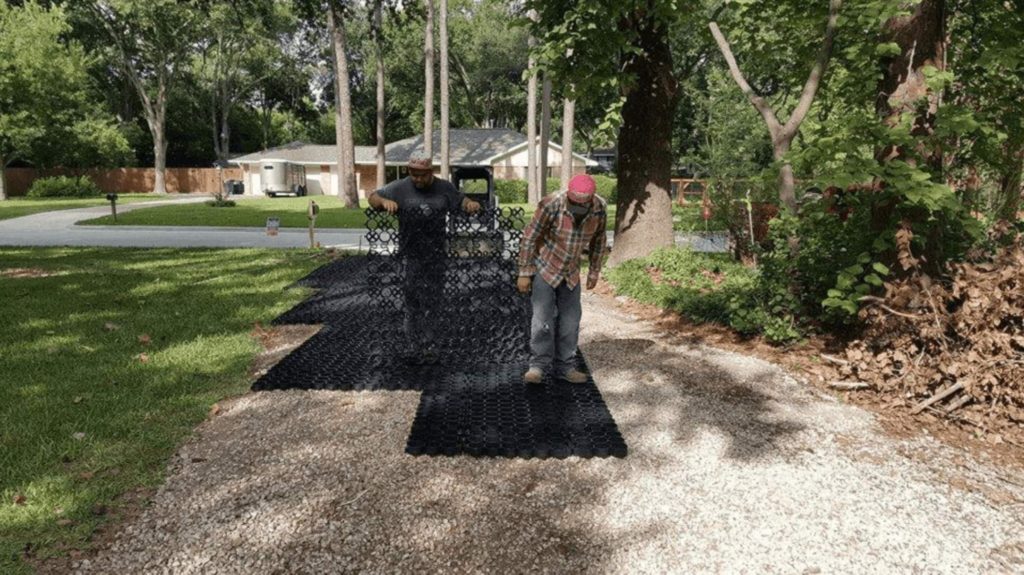
Then, the excavated pit is filled with washed angular stone, and compacted until level. Afterward, the empty TRUEGRID pavers are snapped together in place over the base aggregate. Finally, infill the TRUEGRID with the aggregate that fits your aesthetic. The infill aggregate also anchors down the TRUEGRID, which prevents them from shifting under the weight of vehicles.
This completes the installation of a stabilized gravel driveway, with the entire process often taking less time to complete than that of a loose gravel driveway. This quick and easy process is why many consider permeable pavers one of the best diy gravel driveway ideas to choose from.
TRUEGRID Pavers are the Best Option for Snow and Water Mitigation
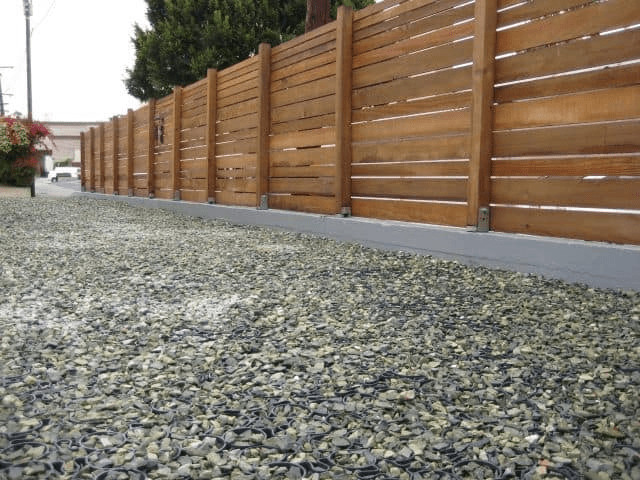
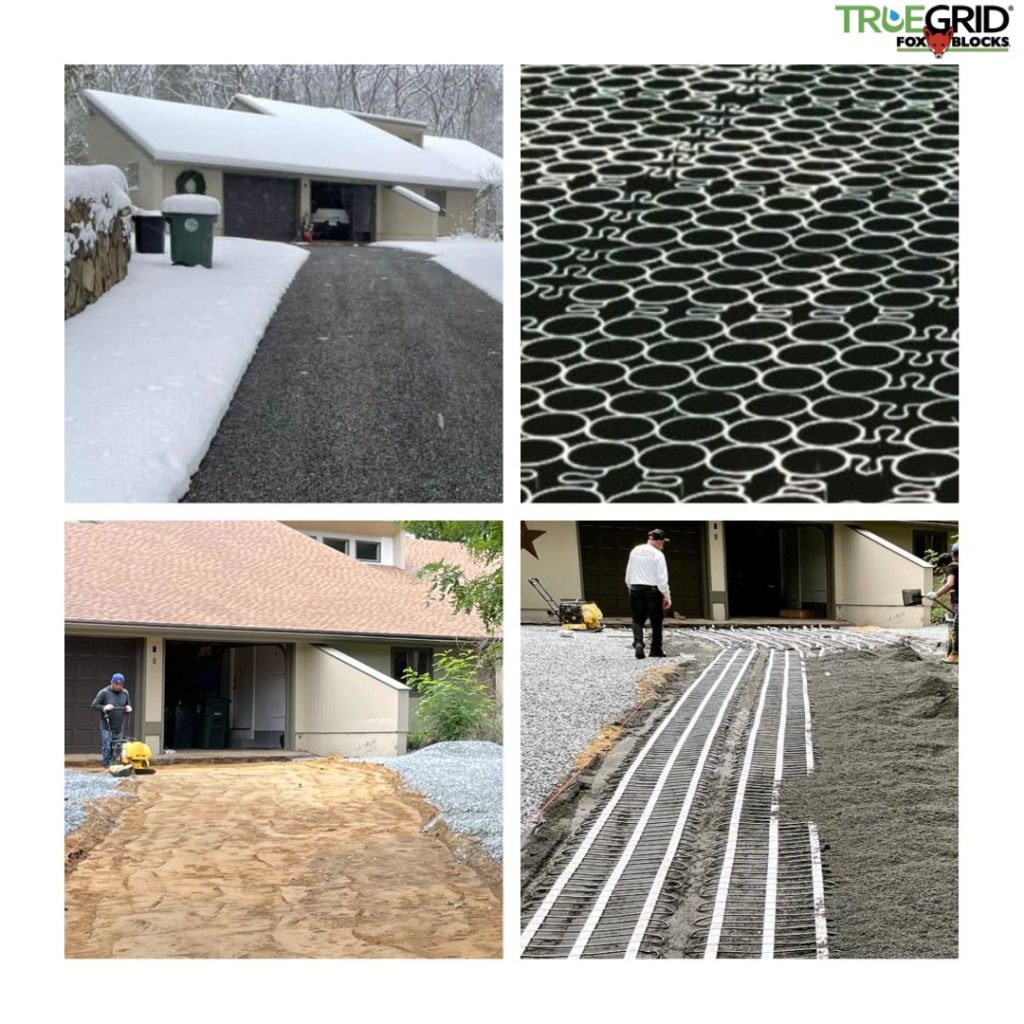
Mitigating snow and water in your driveway is important for preventing degradation and minimizing the amount of maintenance you need to perform. If you want the best option available for mitigating snow and water, call TRUEGRID today and get in touch with a pavement professional for a free quote.



